Air Pollution within a Street Canyon, CFD Simulation, ANSYS Fluent Training
$240.00 Student Discount
- The problem numerically simulates the Air Pollution within a Street Canyon using ANSYS Fluent software.
- We design the 3-D model with the Design Modeler software.
- We mesh the model with ANSYS Meshing software, and the element number equals 1938659.
- We use a Profile to define input velocity as a function of the input section’s location.
- We use the Species Transport model to consider the distribution of pollutants in the canyons.
- We define Source terms for pollutants on the street zones.
Click on Add To Cart and obtain the Geometry file, Mesh file, and a Comprehensive ANSYS Fluent Training Video.
To Order Your Project or benefit from a CFD consultation, contact our experts via email ([email protected]), online support tab, or WhatsApp at +44 7443 197273.
There are some Free Products to check our service quality.
If you want the training video in another language instead of English, ask it via [email protected] after you buy the product.
Description
Description
The present problem simulates pollution diffusion in a street canyon using ANSYS Fluent software.
In this modeling, an urban area is defined as the computational area of the model; Thus, two rows of building blocks are created parallel to each other, and as a result, space is created between these two rows of building blocks, which is called a street canyon or an urban canyon.
The type of canyons and their constituents’ geometric dimensions can effectively distribute urban heat or the distribution of different gases in the air. The present model is designed in three dimensions using Design Modeler software.
The model’s computational area has a length of 36 m, a width of 24 m, and a height of 8 m. Within this computational area, two rows of simple geometric building blocks are designed to parallel each other.
Also, to reduce the computational cost, the model is designed in a limited way, and the symmetry boundary condition is used in the surrounding areas of this urban area. The meshing of the model has been done using ANSYS Meshing software. The element number is 1938659.
Air Pollution Methodology
This work investigates the amount and distribution of pollutants in the space of these canyons. Therefore, the Species Transport model has been used to perform this simulation.
The model has two types of gas, including air and pollutants; the pollutant species has a specific heat capacity of 1100 j/kg.K and a molecular weight of 77.49064 kg/kmol, and air has a particular capacity of the heat of 1006.43 j/kg.K and the molecular weight is equal to 28.966 kg/kmol.
It is assumed that all pollutants are generated within the street canyon space; therefore, two grooves are created on the ground in the canyon space, which acts as a source of pollution.
Therefore, a source term for the pollutant species of 0.011 kg/m3.s is defined in the contamination area from the model’s computational area. Initially, there is only air inside the urban area, and then pollutants begin to be produced.
At the model inlet boundary, only pure airflow enters, and the velocity inlet condition is used. The value of input velocity is defined as a function of the input section’s location, and hence, a profile in UDF format is used.
Also, the air temperature is set to 300K. Moreover, the RNG k-epsilon model and energy equation are enabled to simulate the turbulent fluid equations and calculate the temperature change within the domain.
Air Pollution Conclusion
At the end of the solution process, three-dimensional contours related to pressure gradient, velocity, temperature gradient, air mass fraction, mass fraction of pollutants, and two-dimensional contours related to velocity, air mass fraction, and mass fraction of pollutants were obtained.
As seen from the pictures, air pollution occurs from the interior of the street canyon. Two-dimensional and three-dimensional velocity vectors have also been obtained. Depending on the behavior of the velocity vectors inside the canyon, a vortex or flow rotation appears.
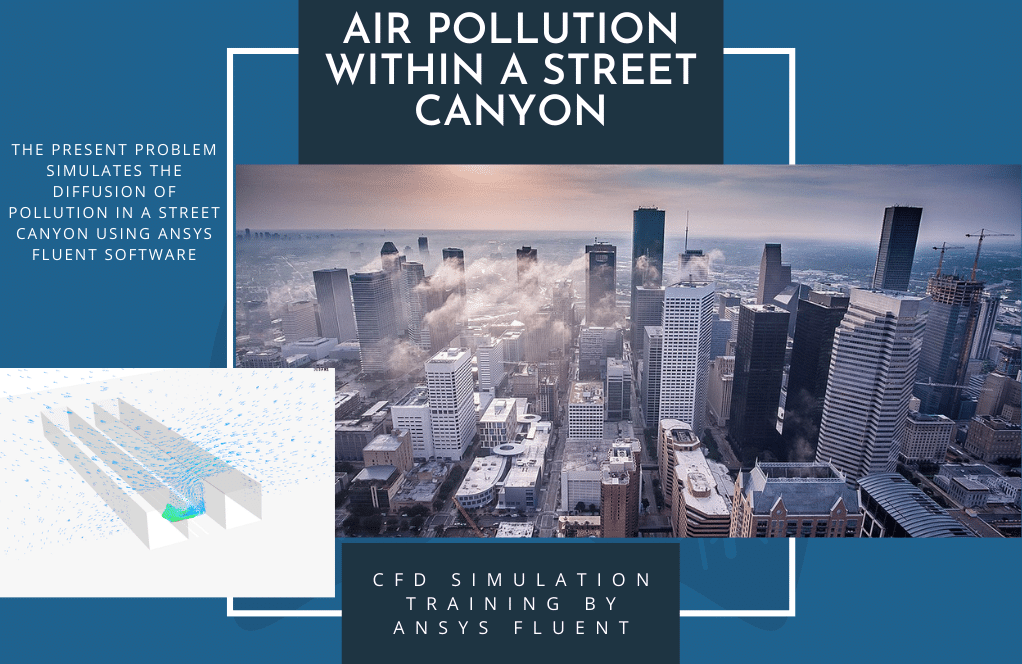
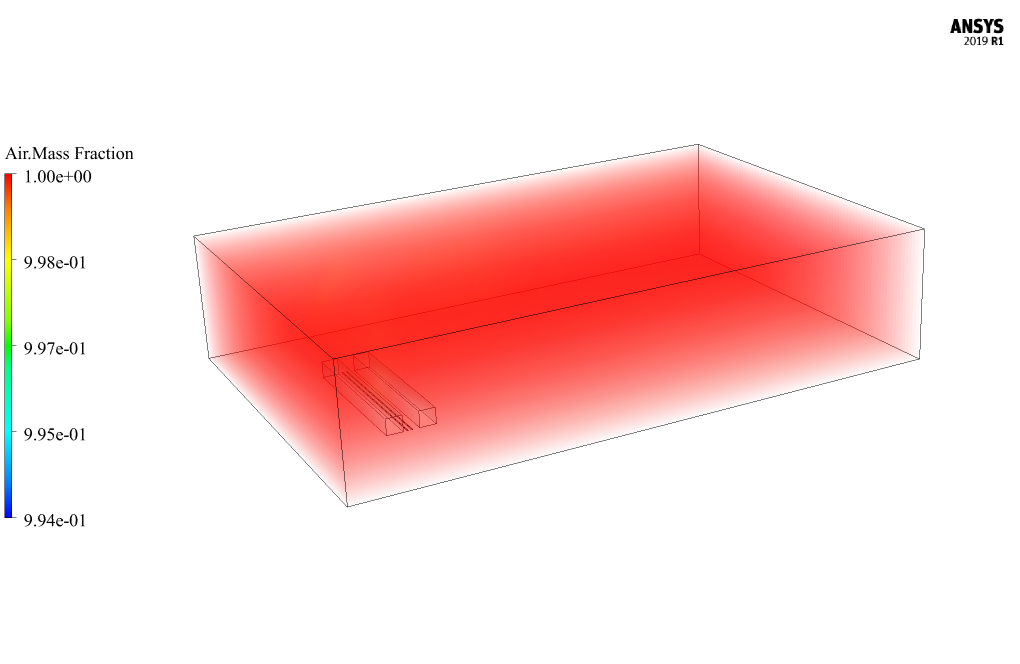
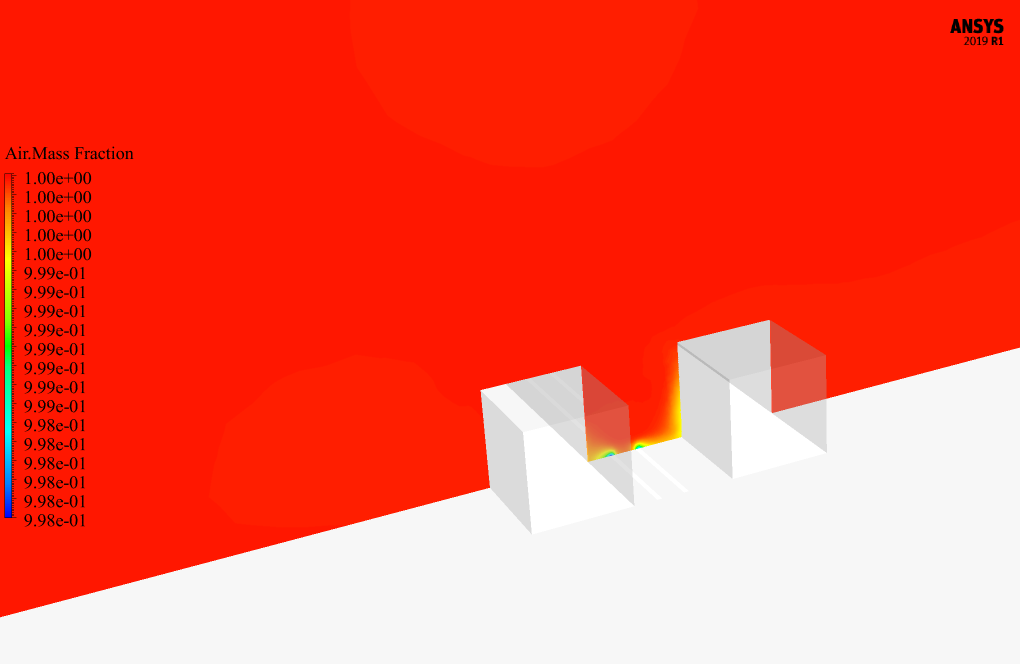
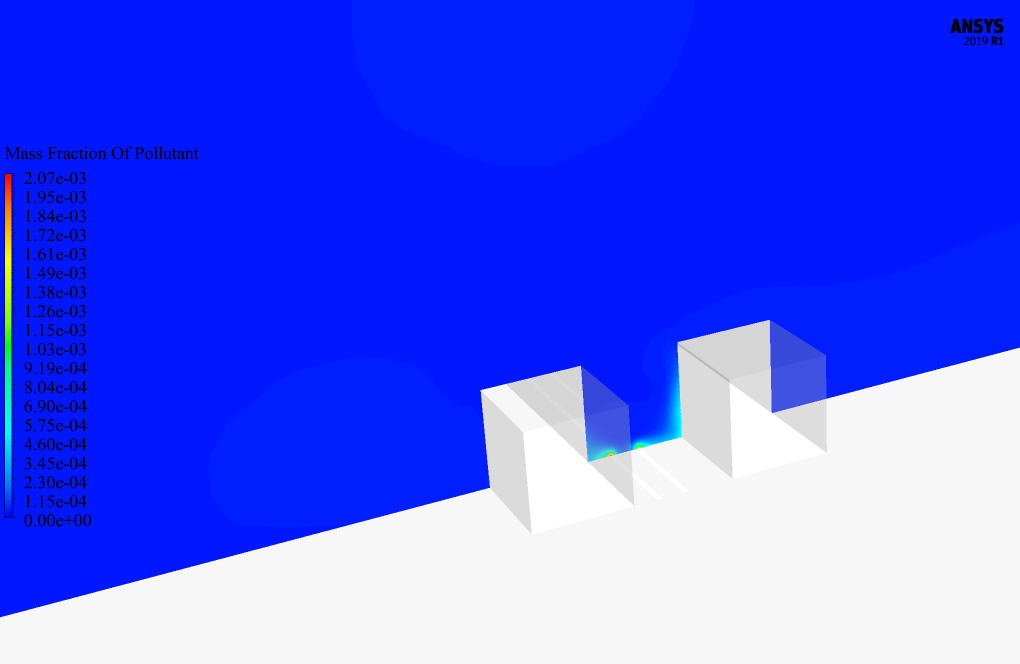
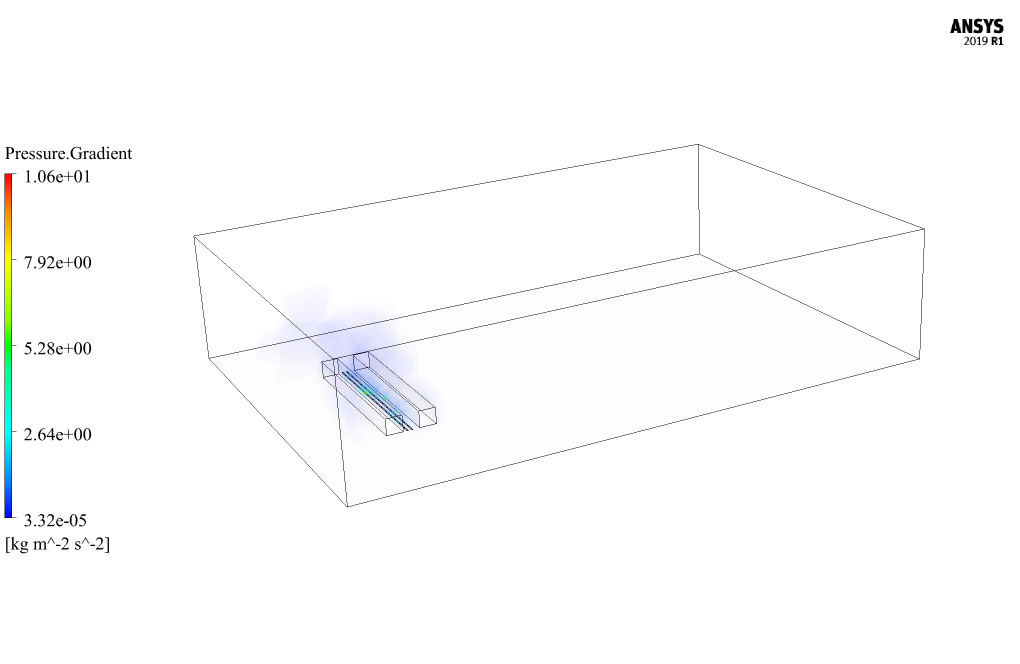
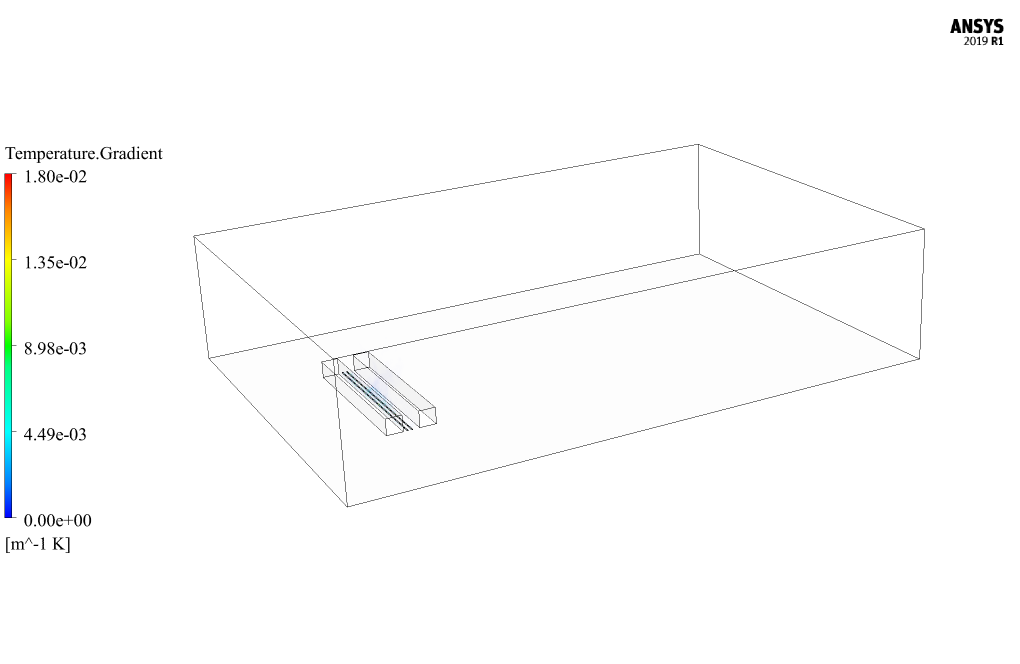
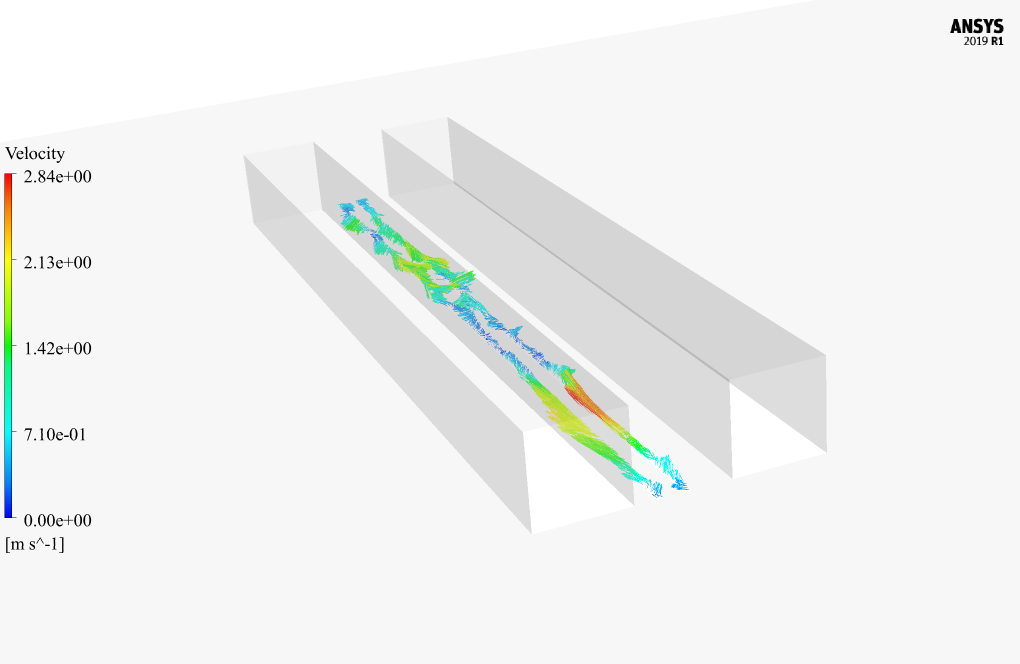
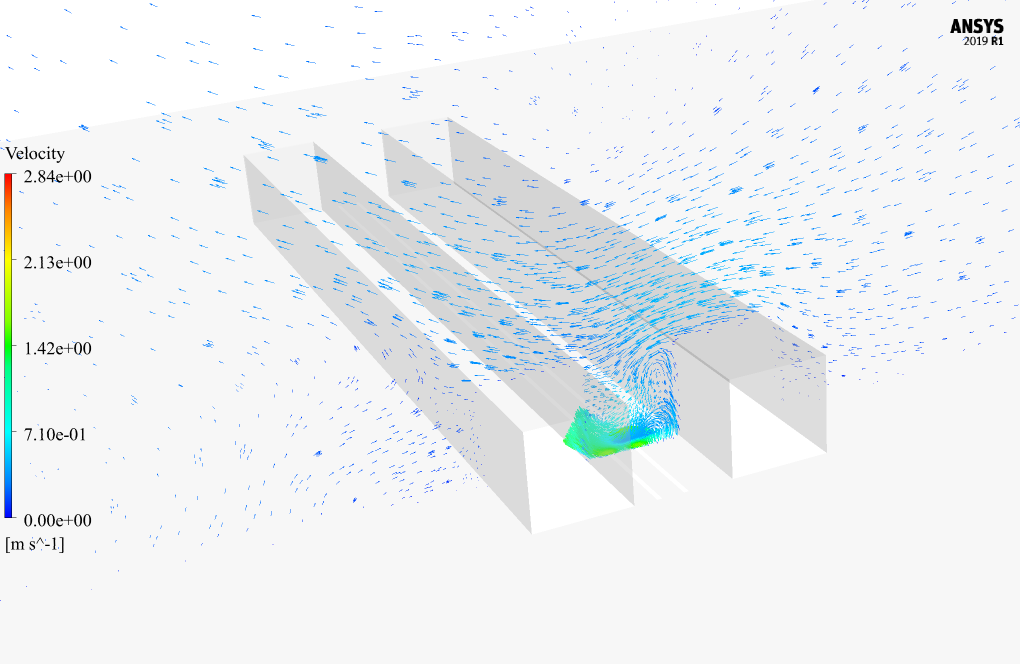
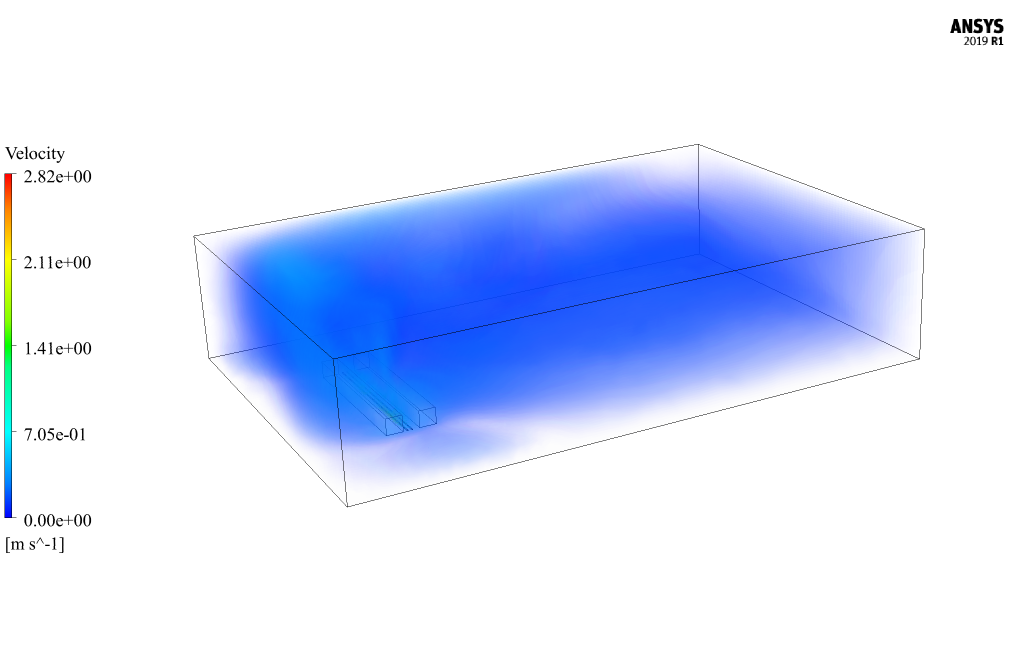
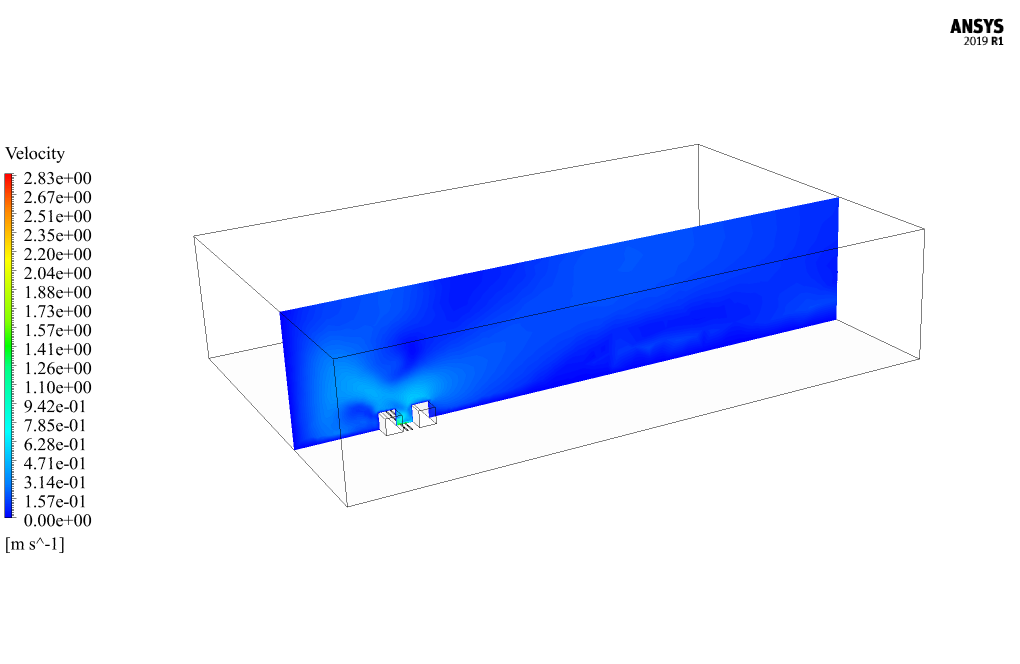
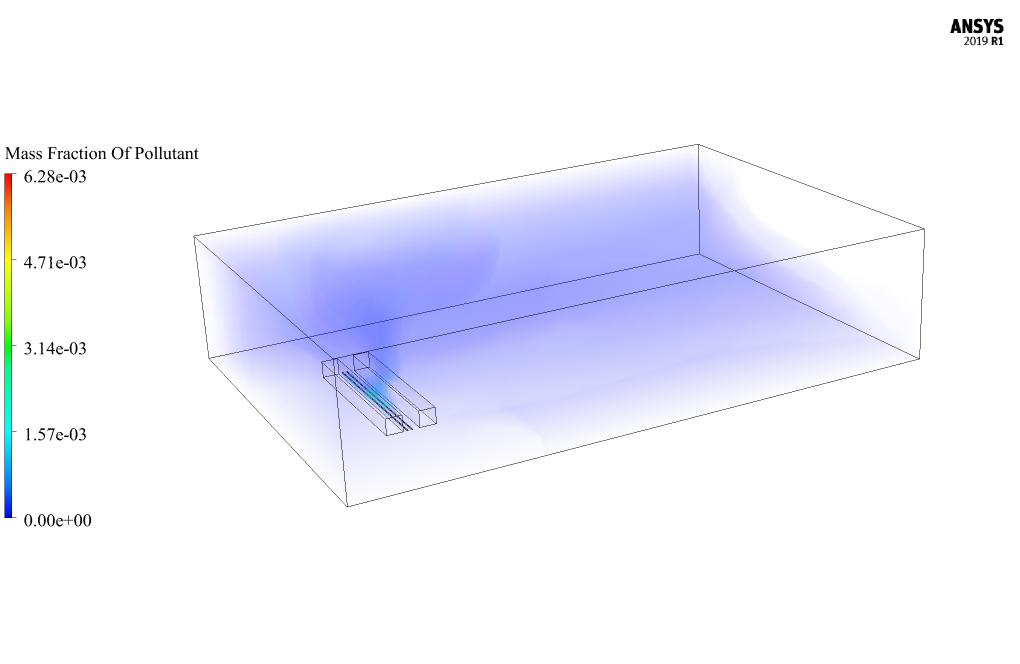



Royce Crona –
After completing this training product, I feel I have a strong understanding of how to simulate air pollutants within an urban canyon using ANSYS Fluent. The material was well-structured, and the step-by-step processes fleshed out the intricacies associated with urban pollution distribution. The visual aids illustrating pollutant dispersion and air flow patterns were especially helpful in grasping how various factors influence pollution concentration within a street canyon.
MR CFD Support –
We’re thrilled to hear that our training helped you understand the complexities of air pollution simulation in urban environments. Thank you for sharing how the structure and visual components of the course aided your learning experience. Your feedback is invaluable to us, and we are pleased to have provided you with a resource that met your expectations. We look forward to assisting you in future learning endeavors!
Elmo Mohr –
Wonderful product! I’m impressed by the detailed research on urban pollution using ANSYS Fluent. Seeing the output regarding pollutant distribution is very valuable for urban planning.
MR CFD Support –
We’re thrilled to hear that you find the research on urban pollution valuable! Thank you for your positive feedback. Our team puts in a great deal of effort to ensure detailed and accurate simulations. It’s fantastic to know that the product is aiding in urban planning efforts!
Madalyn Maggio –
The provided explanation of the pollution diffusion simulation was impeccably detailed. It offered an excellent portrayal of the urban environment’s precise modeling and the computational strategies employed for analyzing pollutant distribution within the street canyon. Such depth facilitates a practical understanding for urban planning and environmental impact studies.
MR CFD Support –
Thank you for your kind words! We are thrilled to hear that you found our detailed explanation of the Air Pollution within a Street Canyon simulation helpful and informative. We always strive to provide top-quality educational content that is both thorough and practical. If you ever have any further questions or need additional information, please don’t hesitate to reach out. Your appreciation motivates us to continue creating high-standard learning materials for CFD and related fields.
Mckayla Lehner DVM –
What challenges might be associated with modeling the distribution of pollutants in a street canyon, and how does this ANSYS Fluent training help to address them?
MR CFD Support –
Challenges in modeling pollutant distribution in a street canyon include accurately capturing the complex flow patterns affected by building geometries, the chemical properties of pollutants, and the thermal effects. This ANSYS Fluent training provides detailed methodology on setting up Species Transport model, defining source terms for pollutants, and creating velocity profiles, which are crucial for realistic simulation. It also showcases using turbulence models like RNG k-epsilon and solving energy equations to factor in temperature variations, enabling users to overcome these challenges effectively.
Prof. Antonio Kassulke II –
I’m highly interested in urban environmental studies, and this product seems incredibly relevant. However, before purchasing, I would like to know if the product also includes any discussion or tutorials on how to interpret and use the simulated data for further environmental studies. Does it explain how the results can be applied in real-world scenarios?
MR CFD Support –
Yes, the training includes a comprehensive interpretation of the simulation results and their practical implications. It covers how the simulation can inform environmental studies and urban planning decisions to minimize pollution and improve air quality within street canyons. Additionally, real-world applications are discussed, allowing users to understand how to leverage data from simulations like these for environmental impact assessments and policy-making.
Brent Kunde IV –
The training product was well-structured and informative—I especially appreciated the detailed methodology in simulating air pollution within a street canyon. The use of UDF for velocity inlet profile and source term for pollutant was a clever approach. I’ve gained a lot of insights on urban pollution dispersion.
MR CFD Support –
Thank you for your positive feedback! We are delighted to hear that our training material met your expectations and provided you with valuable insights on air pollution simulation in urban environments. If you require further information or assistance with CFD simulations, don’t hesitate to reach out to us.
Ms. Mona Hessel IV –
I loved how the training covered complex urban pollution modeling. The inclusion of UDF for velocity profile gave me a deep dive into customizing simulations. Incredible detail on the street canyon scenario!
MR CFD Support –
Thank you for sharing your positive feedback on our Air Pollution within a Street Canyon CFD Simulation training. We’re glad the details and customizability of the simulation met your expectations and provided valuable insight into urban pollution modeling. Your satisfaction is important to us, and we look forward to providing you with more quality learning experiences!
Eleanora Little –
This training product seems in-depth! After pollutants are generated in the street canyon space, how is their distribution affected by the architectural layout of the buildings?
MR CFD Support –
In the simulation, architectural details, such as the layout and height of the buildings, can create unique airflow patterns, including vortexes. The flow rotation shaped by these patterns directly influences how pollutants disseminate within the street canyon. A properly executed simulation can visualize the change in pollutant concentration due to building-induced modifications in the air flow.
Harmon D’Amore –
This course has illuminated me on the impact of urban design on pollution dispersion. The use of CFD to simulate such complex environmental systems is truly remarkable. Excellent work!
MR CFD Support –
Thank you for your kind words! We’re thrilled to hear that our training course on air pollution simulation in urban street canyons has been insightful and valuable to you. It’s wonderful that you appreciate the power of CFD in understanding environmental phenomena. If you have any further questions or need more information about our courses, please feel free to reach out!
Prof. Nayeli Mayert Sr. –
The training was impressive. Detailed aspects of urban CFD simulations were covered, and the explanation of how pollutants disperse in a street canyon is invaluable for urban planning and environmental studies. The use of Species Transport model along with the velocity inlet defined via UDF shows a remarkable level of detail and customization. The work with RNG k-epsilon for turbulence and temperature gradients was particularly insightful.
MR CFD Support –
Thank you for your kinds words! We are thrilled to hear that the training on air pollution simulation within a street canyon using ANSYS Fluent was not only helpful but provided valuable insights into urban environmental studies. Understanding the dispersion of pollutants is crucial, and we always strive to provide detailed and applicable information in our trainings. We appreciate you taking the time to recognize our efforts and look forward to providing you with more high-quality educational content!
Dr. Lessie Buckridge Jr. –
After completing the training on this CFD simulation, I feel confident in setting up urban pollution models. The step-by-step approach in the training facilitated my understanding of how to implement the Species Transport model and customize boundary conditions for pollutants.
MR CFD Support –
Thank you for your positive feedback! We’re thrilled to hear that our training has helped you feel confident in creating pollution models using ANSYS Fluent. Your understanding and implementation of complex features like the Species Transport model are crucial to accurate simulations, and we’re glad our step-by-step approach proved effective. Thank you for choosing MR CFD Company for your learning journey!
Shaina Rempel –
The UDF used for the velocity inlet is intriguing. Can you detail how this user-defined function (UDF) is specifically coded to create a velocity profile at the inlet boundary?
MR CFD Support –
Certainly! The user-defined function (UDF) for the velocity profile is coded using C programming in the context of ANSYS Fluent. It typically defines the velocity magnitude and direction based on the position, allowing for the simulation of realistic flow conditions such as varying wind speeds at different heights in an urban canyon. While I cannot give the exact code without more details, I assure you that the UDF is an effective tool for customizing boundary conditions to closely match real-life scenarios in computational fluid dynamics simulations.
Brandt Leuschke –
I loved learning how the air pollution diffuses in a street canyon with this simulation! The level of detail and the comprehensive analysis of the velocity and temperature distributions were particularly impressive.
MR CFD Support –
Thank you so much for your positive feedback! We’re thrilled to hear that you found the air pollution simulation in a street canyon detailed and informative. Understanding the diffusion of pollutants is crucial for urban planning and public health, and we are glad our ANSYS Fluent training could provide valuable insights. Your appreciation is greatly encouraging for our team!
Heidi Rath –
I just finished the Air Pollution within a Street Canyon CFD Simulation training. Great stuff! I can see the flow complexity and how pollution is affected by street structure. The visualizations were especially helpful to understand the pollutant’s distribution.
MR CFD Support –
Thank you for your fantastic feedback! We’re really glad to hear that the training was able to provide you with clear visualizations and enhance your understanding of airflow and pollutant distribution in urban environments. If you have any more questions or need further guidance, feel free to reach out!
Ulices Gaylord –
What a thorough and engaging training on urban pollution simulation! It explains the dynamics of pollution dispersal so well, all within ANSYS Fluent. The setup with the street canyon model is clever. I’m impressed how the UDF velocity profile inclusion adds a touch of realism to the air inflow. Great job by MR CFD here!
MR CFD Support –
Thank you for your positive feedback! We’re thrilled to hear that you found the Air Pollution within a Street Canyon CFD Simulation training both thorough and engaging. It’s our aim to provide realistic and insightful simulation setups that help users better understand complex dynamics like urban air pollution dispersal. Your appreciation means a lot to us. We hope our training continues to be a valuable resource to you!
Mr. Vince Kuhn I –
I’m particularly interested in how the UDF function is utilized for inflow velocity profile. Does the training cover how to write and compile the UDF for this simulation?
MR CFD Support –
Yes, the training does cover the process of writing and compiling a User Defined Function (UDF) for controlling the inflow velocity profile in this simulation. The module will guide you through the creation of the UDF, its syntax, and the steps to successfully compile it in ANSYS Fluent.
Jaylen Orn V –
This ANSYS Fluent training was awesome! I could clearly see the impact of the street canyon on air pollution distribution. I was intrigued by how the pollution sources were set up to realistically simulate the environmental conditions. Great materials for my project research!
MR CFD Support –
Thank you! We’re thrilled to hear that you found the training valuable and that it contributed meaningfully to your project research. We take pride in providing realistic simulations to help understand complex phenomena like air pollution. If you have any more feedback or need further assistance, feel free to reach out!
Addie Shanahan V –
Moving air helps distribute the pollutants, but how does the profile of the input velocity affect the pollutant distribution?
MR CFD Support –
The profile of the input velocity is crucial as it determines the flow behavior within the street canyon. Higher velocity can lead to more turbulent mixing and better dispersion of pollutants, whereas lower velocities might result in pollutants being trapped within the canyon. The actual effect of input velocity profile on pollutant distribution is mapped through the Species Transport model in ANSYS Fluent which accounts for the variations in flow due to velocity differences. In this scenario, the UDF (User Defined Function) defines a velocity function at the inlet that simulates the natural wind velocity variations in urban environments. The simulation predicts how these inputs impact the concentration and spreading of pollutants within the street canyon.